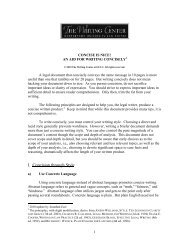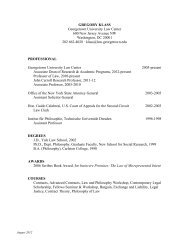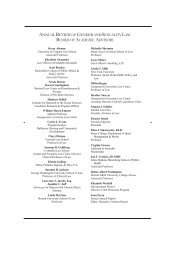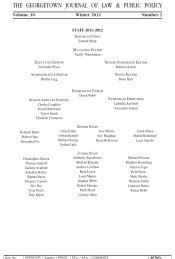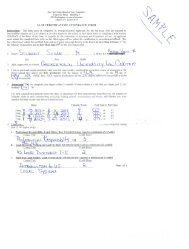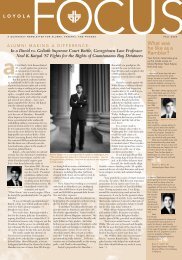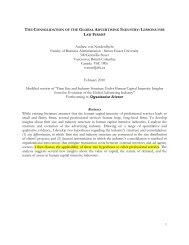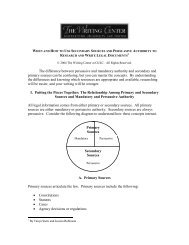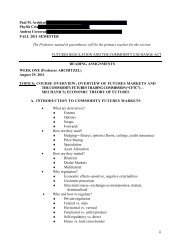Date: April 12, 2013 Topic: The Shrinking ... - Georgetown Law
Date: April 12, 2013 Topic: The Shrinking ... - Georgetown Law
Date: April 12, 2013 Topic: The Shrinking ... - Georgetown Law
You also want an ePaper? Increase the reach of your titles
YUMPU automatically turns print PDFs into web optimized ePapers that Google loves.
<strong>The</strong>se data covered all the partner lawyers and manager lawyers at the firm who were<br />
working in the largest of the firm’s departments, from the period 2005 to 2010. Our analysis<br />
focuses on the connections between managers and partners, and the value being created by<br />
managers. In the case firm, managers lead client projects, with the assistance of teams of junior<br />
lawyers, while partners oversee client relationships but are not necessarily as directly involved in<br />
the client projects on a daily basis. Our tie formation analysis focuses on managers as producers<br />
of value, and manager (“M”) – partner (“P”) dyads as key relationships that can contribute<br />
important knowledge to the value production process. Our interviews suggested that focusing at<br />
the manager level would be valuable because managers are the essential decision makers<br />
regarding the way knowledge will be applied to each client project. M-P dyad ties are important<br />
for managers in terms of their learning and development, as well as for building support among<br />
partners for their own eventual advancement (via partner vote) into the partnership. 2<br />
We also collected and analyzed a large amount of qualitative data from the case firm.<br />
Between 2005 and 2008, we tracked the use of KMS in practice by repeated interviews with<br />
lawyers working on <strong>12</strong> different client projects. <strong>The</strong> projects were selected for tracking because<br />
they were considered representative of the firm’s scope of services (including: preparing a due<br />
diligence report for a company in the process of a takeover; helping a new shareholder to<br />
restructure an acquired company; choosing the optimum fiscal location for an industrial group’s<br />
new banking entity and set up its contractual structure; advising a company subject to a tax<br />
inspection in connection with litigation, etc.). In total, 16 partners, 10 managers, and 6 junior<br />
associates were interviewed who were working on these client project teams. Interviews lasted<br />
from thirty minutes to four hours, with an average of about an hour and a half and were recorded<br />
(one person refused to be taped and two persons made corrections to the transcription of their<br />
interview).<br />
In addition to the project tracking interviews, key archival materials were obtained from<br />
the case firm, including internal documentation of the design, development and roll-out of the<br />
system. One of the authors also attended five two-hour departmental meetings held in different<br />
lines of business from 2005 to 2008.<br />
Dependent variables<br />
New tie formation. Our first dependent variable, new tie formation, is based on the<br />
observation of new workplace ties between managers and partners. To construct this variable, we<br />
defined a new tie if an M starts billing a P’s clients at least 50 hours in a given year, and there<br />
has not been any client billing based connection between that M and P during the prior 3 years.<br />
<strong>The</strong> 50 hour threshold was used by the firm to define a formal supervisory relationship between<br />
managers and partners. This approach is similar to that used by Briscoe and Tsai (2011). For<br />
each MP dyad year, we then coded the new tie formation dependent variable 1 if a new tie was<br />
formed in that year; otherwise the variable was coded 0.<br />
Value creation. Our second dependent variable, value creation, is based on revenue<br />
generation through billable hours. Specifically, we used the total billable hours of each<br />
individual M as the dependent variable for models predicting value creation, while controlling<br />
for last year’s billable hours by that same M.<br />
2 Note that our data do not permit us to observe M-M or P-P ties directly, since our relationship data come from lists<br />
of formal supervisory relationships that show which M’s have worked for each P’s clients in a given year. <br />
<br />
7



